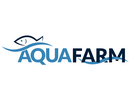From underwater drones to IoT, from farming plants designed by means of simulation tools to applied artificial intelligence, an overview of innovative solutions and technologies at the Sixth Edition of AquaFarm in Pordenone on 15 and 16 February 2023. The show is held together with Novelfarm and Algaefarm. Access to the event is free.
As in many different sectors, even aquaculture relies more and more on drones, technically known as ROUV (remotely operated underwater vehicles), that support divers in underwater works typical of marine aquaculture but also in fish farming and shellfish farming.
The most recent developments concern the complete replacement of human intervention in some activities, such as inspections and fish counting, thanks to increasingly dependable sensors. More radical developments are pushing in the same direction, making it possible to dispense with the cable connection with the command station, both through the use of different types of wireless connections (optical, ultrasonic, radiofrequency) and by equipping the vehicles with a degree of autonomy and intelligence.
Click here to register for the event.
The application of distinct types of artificial intelligence to aquaculture does not stop there. A particularly interesting field is the counting of fish contained in an offshore cage, currently taking place with empirical methods that join together sensors with an AI algorithm. In this way, it is possible to improve resource planning by eliminating, for example, waste of feed, which today represents about half of the farming costs. Always combining sensors with AI, today it is possible to keep the water conditions in farms under control or to work on them. How? For example, by checking oxygenation, murkiness, and the presence of harmful compounds, the purification, disinfection, and aeration systems may always operate at their best.
The field of sensors for aquaculture is seeing a huge development, and the quantity and pervasiveness of the data collected allow us to go beyond the monitoring and control of the breeding environment up to the creation of real digital twins of the same, which allows us to carry out simulations to understand in advance how certain interventions may develop in reality. These technologies also allow you to design farms in the best possible way, both at sea and on land, taking into account the environmental conditions in which you are going to operate and devising solutions for better animal welfare, improved work functionality, and ergonomics for the workers. Also, including the possibility of precisely sizing the water purification and recycling systems with a corresponding reduction to a minimum of their impact on the local environment.
 For more information:
For more information:
AquaFarm 2023
www.aquafarm.show
